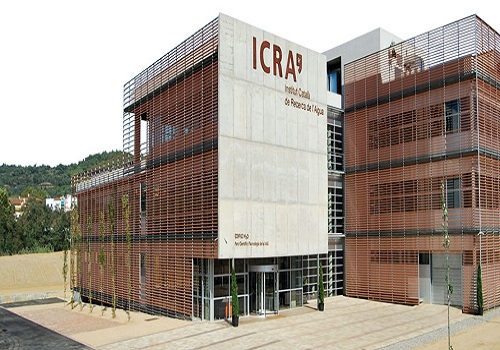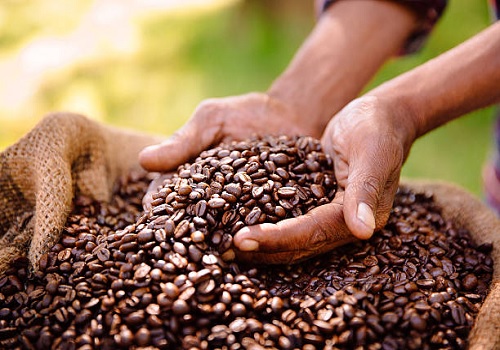Agri Commodity Technical Report 29 January 2024 - Geojit Financial Services

Follow us Now on Telegram ! Get daily 10 - 12 important updates on Business, Finance and Investment. Join our Telegram Channel
https://t.me/InvestmentGuruIndiacom
Download Telegram App before Joining the Channel
MARKET NEWS/UPDATES:
• The area under rabi crops in Telangana stood at 4.22 mln acres as of Wednesday, 8% lower than 4.60 mln acres a year ago, according to data from the state government. The acreage so far accounts for 77% of the normal rabi crop area of 5.5 mln acres for the entire season, the data showed. One acre is about 0.40 ha. The area under pulses fell 25% on year to 299,563 acres. Acreage of Bengal gram was down nearly 27% on year at 250,452 acres. For the rabi season, the normal acreage for pulses is 421,163 acres. Maize, Bengal gram, jowar, and groundnut are the main rabi crops grown in the state. The total area under major millets rose to 584,226 acres from 553,264 acres a year ago, the data showed. Jowar, bajra, maize and ragi are the major millets grown in the state. Maize was sown over 459,821 acres, lower than 470,684 acres a year ago. The season's normal area for maize is 511,521 acres, and it covers the maximum area under major millets, as per data. Jowar, the second-major millet in the state, was sown over 123,595 acres, nearly 53% higher than 80,868 acres a year ago. Paddy sowing fell 8% on year to 3.04 mln acres. The season's normal acreage is 4.05 mln acres. The area under food grains fell 8.2% on year to 3.93 mln acres. Oilseed acreage was at 235,536 acres, down from 265,020 acres a year ago. Groundnuts accounted for 84% of the oilseed acreage at 197,715 acres, down from 218,031 acres a year ago. The normal area for oilseeds in the season is 371,037 acres. Telangana received scanty rainfall at 0.1 mm till Wednesday, and so far, the cumulative rainfall in the year has been normal at 913.8 mm, the data showed. The water level in major reservoirs in the state as of Wednesday was 362.31 bln cu ft, down from 603.78 bln cu ft a year ago, according to government data.
• India's sunflower oil imports are likely to decline in the coming months due to a surge in freight rates following the attacks on commercial vessels in the Red Sea by Yemen-based Houthi rebels since November, industry experts said. "The attacks on the Red Sea have led to sunflower import freight rates increasing by $30 to $115 per tn," Sandeep Bajoria, chief executive officer at Sunvin Group told Informist. "It is also a 15-day extra voyage as ships are forced to take longer routes from the Cape of Good Hope, Africa," Bajoria said. The traffic along the Red Sea – one of the world’s busiest waterways – has fallen more than two-thirds since Houthi rebels began targeting commercial shipping, Moody's Analytics said in a report last week. The Red Sea, which connects to the Mediterranean via the Suez Canal, accounts for about 80% of India's merchandise trade with Europe. The voyage time from Russia and Ukraine to India has gone up to 37 days from 22 days earlier, Bajoria said. He expects palm oil imports to India in 2024 to decline to 9 mln tn from 10 mln tn in 2023 and soyoil imports to increase to 4.5 mln tn from 3.5 mln tn. He, however, sees sunflower oil imports in 2024 remaining at 3.0 mln tn. India, one of the biggest importers of sunflower oil, uses the Black Sea region via the Suez Canal for most of its sunflower imports. In Nov-Dec, India imported 266,221 tn, or nearly 70% of its total sunflower oil imports of 389,557 tn, from Romania, Russia and Europe. Argentina was the other major exporter of sunflower oil to India, exporting 85,012 tn during the same period, according to data from the Solvent Extractors' Association. Yemen's Houthi started a series of attacks in November and have attacked more than two dozen ships with drones and missiles.
• India received 1 mm of rainfall in the week ended Wednesday, 75% below the normal weighted average of 3.8 mm for the period, according to the India Meteorological Department. During the week, three homogeneous regions of the country received below-normal rainfall and one received above-normal rainfall. Rainfall in east and northeast India was 49% below normal at 2.3 mm during the week, while rainfall in the southern peninsula of the country was 0.3 mm, 59% below normal. Rainfall in the northwestern region was 99% below normal. Rainfall in the central part was 1.6 mm, 43% above normal. Of the country's 36 sub-divisions, 12 received "large deficient" rainfall, one sub-division received "deficient" precipitation, while four received "normal" rainfall, the bureau's data showed. In 15 sub-divisions, there was no rainfall for the week, while four sub-divisions got large excess rainfall, the data showed. Since Jan 1, the country has received 5.4 mm rainfall, 56% below the normal level of 12.5 mm for the period.
• The area under summer crops in Karnataka fell 30.5% on year to 68,800 ha in the current season as of Saturday, but it is still higher than the normal area of 64,000 ha for the season, according to the state agriculture department's report. The state had sown crops over 99,000 ha in the same period, a year ago. The state has set a target of 654,000 ha for this season and so far 10.5% of the target area has been covered. The acreage under paddy was 19,800 ha, down from 74,000 ha in the corresponding period last year. The state has set a target of 380,500 ha for the season, accounting for over 58% of the total area. Chana was sown over 500 ha and the state has set a target area of 3,300 ha for chana sowing for this season. The total area under rabi pulses was 3,200 ha, up from 2,000 ha a year ago. The target area for pulses for the current season has been set at 15,000 ha. Karnataka, the top maize producer, has sown the crop over 5,300 ha, up from 3,000 ha a year ago. The target for the area under maize is set at 54,000 ha in the current season. The area under cereals fell to 29,800 ha as of Saturday, down from 79,000 ha a year ago. As of Saturday, the area under oilseeds was up at 32,000 ha, twice the sowing area in the corresponding period last year. The target for the current season has been set at 132,900 ha. Groundnut acreage was at 30,600 ha, up from 14,000 ha a year ago, it showed. Groundnut, sunflower, and safflower are the key oilseeds grown in the state.
• The area under rabi crops in Maharashtra fell 5.3% on year to 5.61 mln ha as of today, according to data published by the state agriculture department. The acreage was 5.93 mln ha a year ago. So far, 104% of the average rabi crop area of 5.40 mln ha in the state has been covered, the department said. Acreage of gram, a key rabi crop in the state, fell to 2.57 mln ha from 2.89 mln ha a year ago, the data showed. The area under pulses was at 2.69 mln ha, down from 3.04 mln ha a year ago. Gram, wheat, safflower, mustard, and sorgum are the major rabi crops in the state. Wheat acreage was at 973,759 ha, down from 1.1 mln ha a year ago. The area under jowar rose 19.2% on year to 1.55 mln ha. The total area covered under cereals rose 1.4% on year to 2.86 mln ha. Oilseed acreage fell to 70,592 ha from 74,412 ha a year ago, according to the data. Safflower was sown across 42,463 ha, up from 30,328 ha a year ago, while sunflower acreage fell to 2,710 ha from 8,375 ha last year. As of Tuesday, the water level in the state's dams was 56.4% of capacity compared with 81.6% a year ago, according to data from the state water resources department.
Views express by all participants are for information & academic purpose only. Kindly read disclaimer before referring below views. Click Here For Disclaimer





















